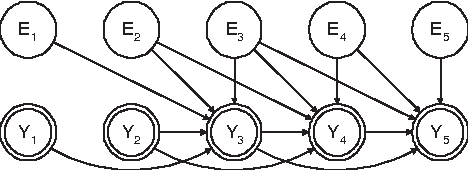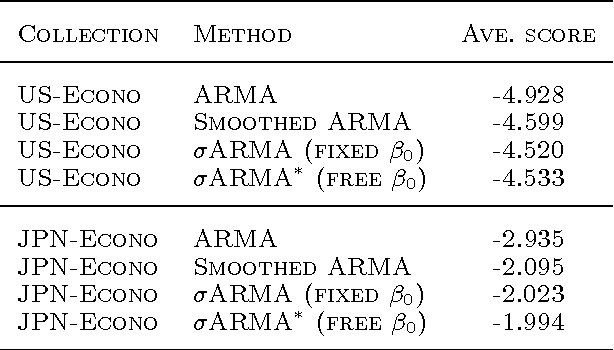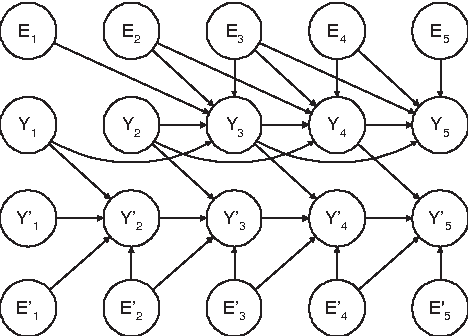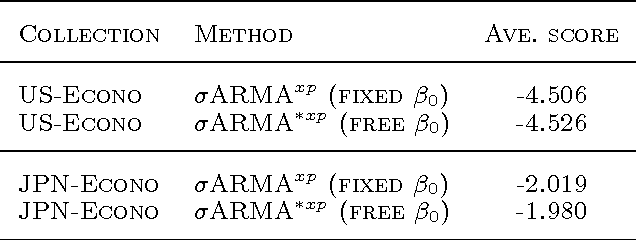ARMA Time-Series Modeling with Graphical Models
Paper and Code
Aug 08, 2012



We express the classic ARMA time-series model as a directed graphical model. In doing so, we find that the deterministic relationships in the model make it effectively impossible to use the EM algorithm for learning model parameters. To remedy this problem, we replace the deterministic relationships with Gaussian distributions having a small variance, yielding the stochastic ARMA (ARMA) model. This modification allows us to use the EM algorithm to learn parmeters and to forecast,even in situations where some data is missing. This modification, in conjunction with the graphicalmodel approach, also allows us to include cross predictors in situations where there are multiple times series and/or additional nontemporal covariates. More surprising,experiments suggest that the move to stochastic ARMA yields improved accuracy through better smoothing. We demonstrate improvements afforded by cross prediction and better smoothing on real data.
 Add to Chrome
Add to Chrome Add to Firefox
Add to Firefox Add to Edge
Add to Edge